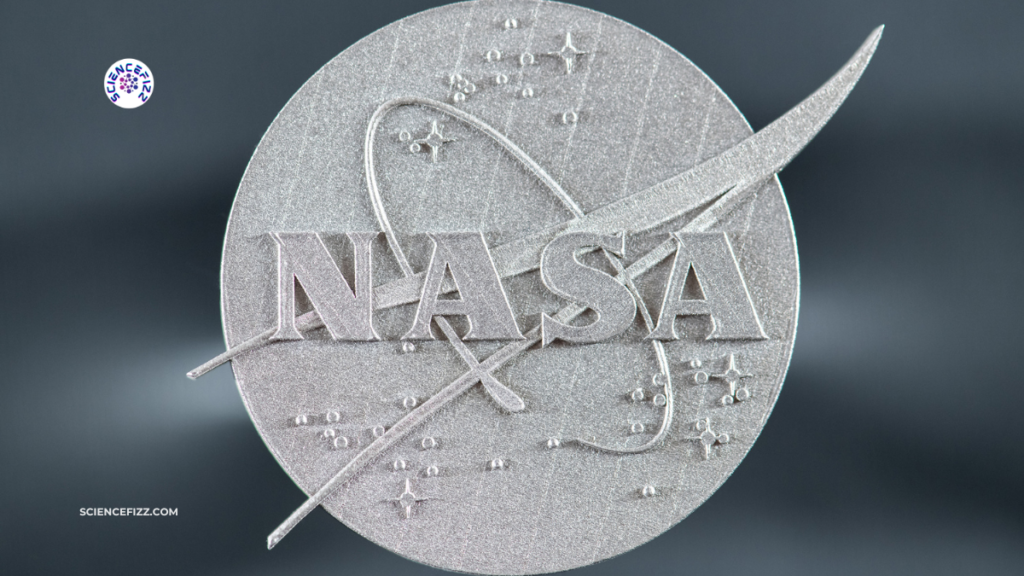NASA & the Ohio State University have developed a new 3D-printed superalloy GRX-810 that can be used to build airplanes and spacecraft.
NASA has achieved an innovative accomplishment in 3D printing technology with the development of GRX-810.
The GRX-810 is a high-temperature superalloy with the capability to revolutionize the production of stronger and more durable components for airplanes and spacecraft.
This innovative material was mentioned in a peer-reviewed paper published in the journal Nature by a team of scientists from NASA and the Ohio State University.
GRX-810 is an oxide dispersion-strengthened alloy with tiny particles containing oxygen atoms, enhancing its strength.
The process makes it an excellent material for building aerospace parts for high-temperature applications.
What is the use of SuperAlloy GRX-810?
NASA’s Glenn Research Center in Cleveland leads this innovation, with Dr. Tim Smith and Christopher Kantzos to develop the GRX-810 superalloy.
They created the new alloy by utilizing time-saving computer modeling and a laser 3D printing process that fused metals together and created layer by layer.
GRX-810 is twice as strong, over 1,000 times more durable, and twice as resistant to oxidation, compared to current state-of-the-art 3D printed superalloys.
GRX-810 also has the potential to particularly improve the strength and toughness of products and components used in aviation and space exploration.
Dale Hopkins, deputy project manager of NASA’s Transformational Tools and Technologies project, considers this new alloy a major achievement.
He added that it could be one of the most successful technology patents NASA Glenn has ever produced.
Read Also: James Webb Telescope Captures The New Insights Of Uranus.
Development of GRX-810
The Transformational Tools and Technologies project at NASA supported the development of GRX-810, with the agency’s Game Changing Development Program providing additional support.
The team of contributors from Glenn, NASA’s Ames Research Center, NASA’s Marshall Space Flight Center, and Ohio State University co-authored the Nature paper.
The team utilized a laser 3D printing process that fused metals together on each layer, to create the new alloy.
3D Printing Technology On The Moon
China has also been exploring the use of 3D printing technology to construct buildings on the moon.
The country aims to establish long-term lunar habitation, and the Chang’e 8 probe will conduct on-site investigations of the environment and mineral composition.
Wu Weiren, a scientist at the China National Space Administration, stated the probe will also figure out whether technologies such as 3D printing can be deployed on the lunar surface.
The race to set foot on the moon has escalated in recent years, especially with the United States.
NASA and Canada’s space agency have named 4 astronauts for the Artemis II mission planned for late 2024. It would be the first human fly-by of the moon in decades.
Conclusion
The development of GRX-810 and China’s exploration of 3D printing technology on the moon highlights the increasing significance of additive manufacturing in the aerospace industry.
These breakthroughs in 3D printing technology could lead to stronger, more durable parts for airplanes and spacecraft, revolutionizing space exploration and travel.
FAQs
-
What is GRX-810?
GRX-810 is a high-temperature superalloy developed by NASA that is twice as strong, over 1,000 times more durable, and twice as resistant to oxidation as current state-of-the-art 3D-printed superalloys.
-
What are the potential applications of GRX-810?
GRX-810 has the potential to significantly improve the strength and toughness of components and parts used in aviation and space exploration, leading to stronger and more durable airplanes and spacecraft.
-
How was GRX-810 developed?
GRX-810 was developed by a team of scientists from NASA and the Ohio State University by employing time-saving computer modeling & a laser 3D printing process that fused metals together, layer by layer.
